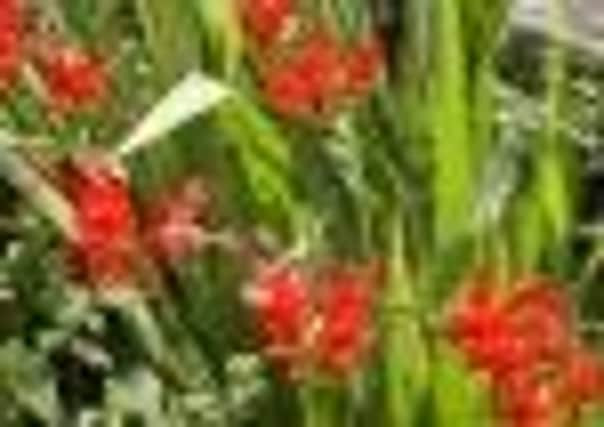The odd couple


Then there are some plants which go to the other extreme – they stand head and shoulders above their fellows, and they shout with colour.
Thus it is with montbretia and crocosmia. Yes, they are the same, but they’re not.
Advertisement
Hide AdAdvertisement
Hide AdThe montbretia in my garden has been there, untouched, for so long that it is now just a mass of sword-like leaves. No flowers. And the only time I tried to dig out its packed rootball of bulbs, I nearly broke the spade.
But the crocosmia is a different matter. In the years since it was planted in its sunny home, it has gone from strength to strength, first producing those long lance-like leaves, and then decorating them with butterfly flowers of the most startling red.
So, while the montbretia sulks and is on the list for removal, I plan to buy more crocosmia (of different colours, notably the apricot-yellow ‘Solfaterre’) because it has proved itself the perfect flower for late summer.
Its red, orange and yellow blooms are not only bright but also warm, soft and really full, and as the season progresses, the flower stems are joined by berry-bearing stems.
Advertisement
Hide AdAdvertisement
Hide AdThe seed buds left by the flowers start out green and later turn red, some even with a hint of purple.
There are large-flowered varieties, such as the familiar ‘Emily McKenzie’ (orange/red) as well as small-flowered varieties like ‘Red King’ (red, obviously), ‘George Davidson’ (yellow/orange) and ‘Meteore’ (red/yellow). In between are cultivars with freesia-like spikes, such as ‘Mistral’ (red with pink) and ‘Lucifer’ – definitely the most popular choice.
Crocosmia is a tuberous plant and a native of South Africa. It was introduced to Europe about 1900. This was a small flowered variety. The first large-flowered crocosmia came onto the market in the Fifties. The name crocosmia is derived from the Greek words krokos (saffron) and osme (fragrance): A plant smelling of saffron.
The plants like a well-drained, humus-rich soil in a sheltered sunny spot.
To propagate, lift and divide every three years or let crocosmia have its head and allow it to spread – which it will.